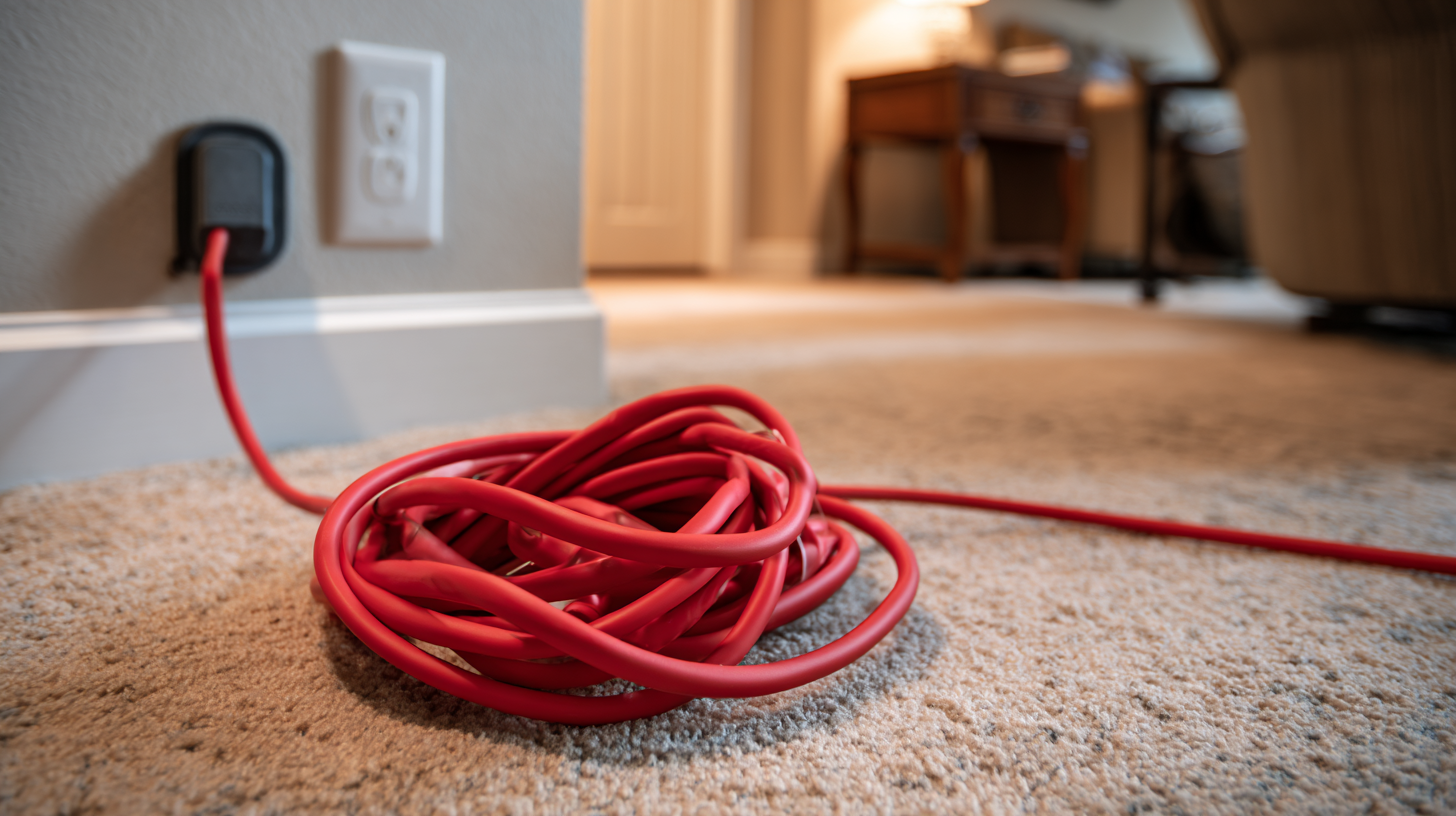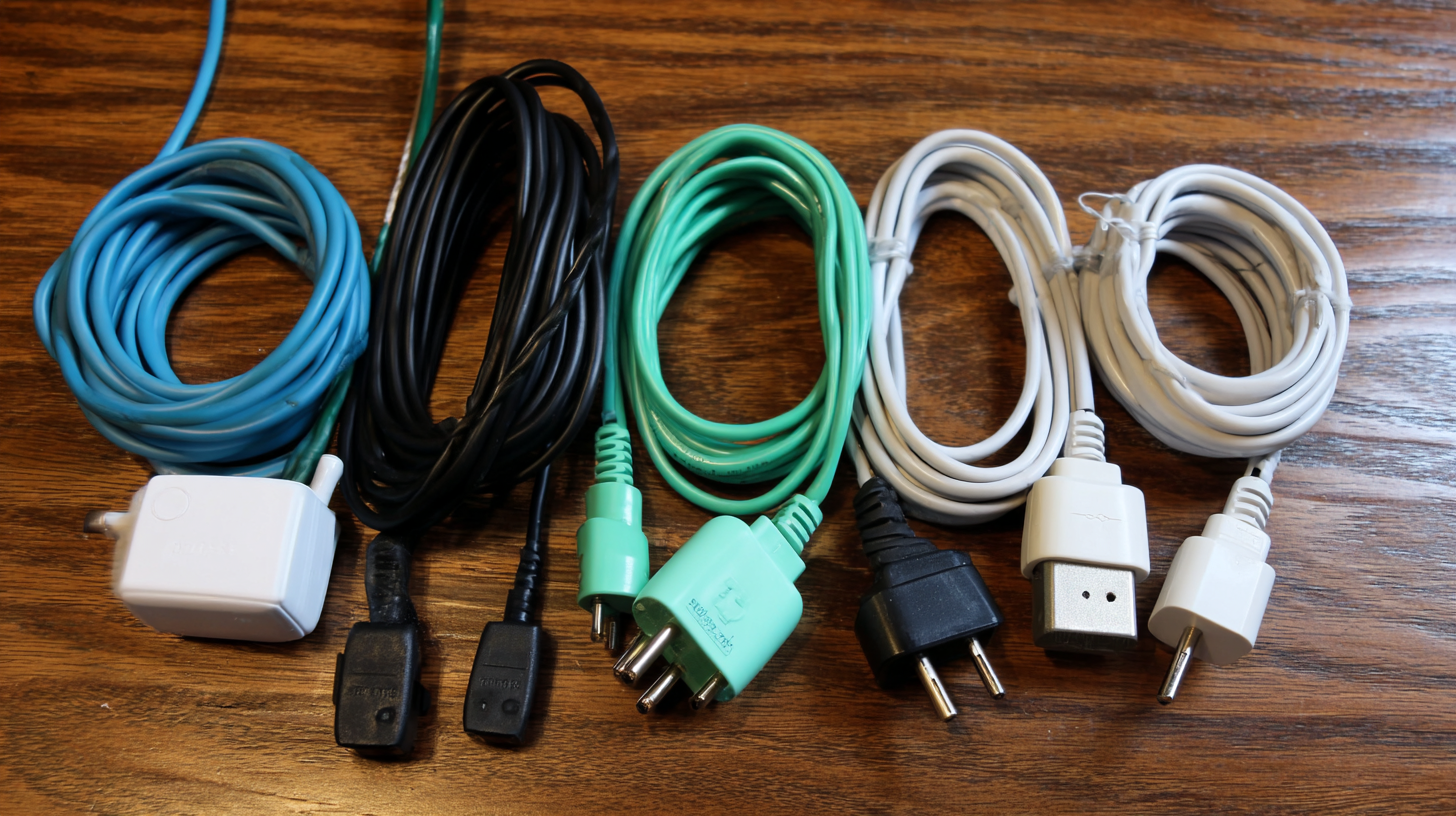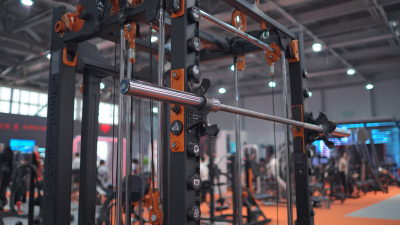How to Choose the Right Short Extension Cord for Your Home Needs
Choosing the right short extension cord for your home needs can significantly enhance your electrical setup, providing you with the convenience and flexibility to power various appliances and devices safely. Short extension cords offer an excellent solution for situations where outlets are limited or when you need to connect equipment without the hassle of long cables, which can lead to tangling or trip hazards. However, it's essential to understand the specifications and features of short extension cords to ensure you select one that meets your specific requirements.

Factors such as cord length, gauge, material, and the number of outlets can all influence how effectively a short extension cord will serve you. By considering these key aspects, you can make an informed decision that maximizes utility and safety in your home environment.
Understanding Different Types of Short Extension Cords for Home Use
When selecting the right short extension cord for home use, it’s essential to understand the various types available. There are primarily three types of short extension cords: multipurpose, heavy-duty, and indoor-specific. Multipurpose cords are versatile and suitable for general household tasks, while heavy-duty cords are designed to handle more power-intensive devices, such as power tools and appliances. Indoor-specific cords are typically lighter and more flexible, perfect for lamps and small electronics. According to the National Electrical Manufacturers Association (NEMA), using the appropriate cord can significantly reduce risks associated with overheating and electrical failures.
**Tips:** Always check the amp rating on the cord, which should match or exceed the amperage of the devices you plan to use. For example, a typical household circuit can handle up to 15 amps. Additionally, consider the cord's length; a shorter cord minimizes voltage drop and power loss. Using cords that are UL-listed can provide extra assurance regarding safety and performance.
Be mindful of the cord's gauge as well. A lower gauge number indicates a thicker wire, which can carry more current over longer distances. For heavier appliances, such as space heaters or refrigerators, a thick 12-gauge extension cord is recommended. In contrast, for light devices like lamps or phone chargers, a 16-gauge cord suffices. The right selection not only enhances safety but also ensures efficiency in energy consumption.
How to Choose the Right Short Extension Cord for Your Home Needs
| Type of Extension Cord | Length | Gauge | Voltage Rating | Ideal Use |
|---|---|---|---|---|
| Indoor Extension Cord | 6 ft | 16 AWG | 125V | Small appliances |
| Outdoor Extension Cord | 10 ft | 12 AWG | 125V | Power tools, outdoor lighting |
| Heavy-Duty Extension Cord | 25 ft | 10 AWG | 250V | High-power appliances |
| Flat Extension Cord | 9 ft | 16 AWG | 125V | Tight spaces |
Key Factors to Consider When Choosing the Right Length of Extension Cord
When selecting the right length of extension cord for your home, it’s essential to consider key factors to ensure safety and efficiency. The National Electrical Code recommends that you avoid using cords longer than necessary, as longer cords can lead to voltage drops that may affect the performance of your devices. For example, a 100-foot extension cord can result in a voltage drop of 10% or more, which may damage sensitive electronics over time.
**Tip:** Measure the distance from the outlet to your power needs and add a few extra feet for flexibility; a general guideline is to keep the length manageable to promote optimal voltage delivery and prevent overheating.
Another factor to consider is the amperage rating of the devices you intend to plug in; most household cords come with a rating of 10 to 15 amps. Using a cord that is too long or not rated for your device’s power requirements could pose a fire hazard. According to industry reports, more than 30,000 home fires occur annually in the U.S. due to electrical failures, emphasizing the importance of using the correct extension cord.
**Tip:** Opt for heavy-duty cords for power-hungry tools or multiple devices, as they are designed to handle higher amperage safely.

Safety Features to Look for in Short Extension Cords
When selecting a short extension cord, safety features are paramount to ensure both functionality and protection against hazards. One key aspect to consider is the gauge of the wire. According to the National Electrical Manufacturers Association (NEMA), a lower gauge number often indicates a thicker wire, which can safely manage higher loads. Ensuring your extension cord has a sufficient wire gauge (14 AWG or lower for heavy loads) can significantly reduce the risk of overheating and fires.
Another crucial safety feature is the presence of built-in surge protection. A report by the Electrical Safety Foundation International (ESFI) highlights that surge protectors can defend your devices from voltage spikes that may occur during storms or electrical outages. Look for short extension cords that specify surge protection ratings, as they indicate a commitment to safeguarding your electronic devices. Lastly, consider cords with reinforced or integrated safety features such as ground-fault circuit interrupters (GFCIs), which automatically cut off electricity in case of a ground fault, further enhancing safety for indoor and outdoor use.
How to Choose the Right Short Extension Cord for Your Home Needs
This chart displays common reasons for using short extension cords and their corresponding safety features. By understanding these aspects, you can select the best extension cord for your specific home needs.
Assessing Power Ratings: Amperage and Voltage Requirements
When selecting a short extension cord for home use, one crucial aspect to consider is the power ratings, specifically the amperage and voltage requirements. Understanding these ratings ensures the safe and efficient operation of your electrical devices. Generally, most household appliances operate on a standard voltage of 120 volts in North America. However, it's essential to check the voltage rating of the specific device you intend to use. If the appliance requires a higher voltage, such as for certain power tools or industrial equipment, you must choose an appropriate extension cord to match this requirement.
Amperage is another critical factor that cannot be overlooked. Each extension cord has a maximum amperage rating that indicates how much current it can safely carry without overheating. For typical household devices, a cord rated for 15 amps is usually sufficient, but higher-demand appliances like air conditioners or space heaters may require a cord rated for 20 amps. Always ensure that the extension cord’s amperage rating matches or exceeds that of your appliance to avoid electrical risks and ensure optimal performance. By assessing both voltage and amperage requirements, you can choose an extension cord that meets your home needs safely and effectively.
Selecting the Best Materials and Construction for Durability and Flexibility
When selecting the right short extension cord for your home needs, the materials and construction of the cord play a crucial role in ensuring durability and flexibility. First and foremost, look for cords made from high-quality thermoplastic or rubber. These materials are not only resilient to wear and tear but also provide excellent protection against outdoor elements if you plan to use them in varying environments. A sturdy outer jacket is essential to prevent fraying and internal damage, which can lead to electrical hazards.
The construction of the extension cord also impacts its performance. Consider cords with reinforced strain relief at both ends, which helps to prevent the internal wires from becoming exposed due to bending or twisting. Additionally, choose cords with a thicker gauge, as this indicates a higher capacity for current flow, reducing the risk of overheating during extended use. A well-constructed extension cord also includes quality connectors that ensure a secure fit to outlets and devices. By focusing on these elements, you can ensure that your extension cord will not only meet your immediate power needs but also last for years to come.

Related Posts
-

What is the Importance of Using Outdoor Extension Cords for Your Projects
-

Maximize Your Power: Understanding the Safety and Efficiency of Extension Leads in 2023
-

Ultimate Guide to Choosing the Right Cabling Machine for Your Production Needs
-

Challenges in Utilizing Flat Plug Extension Cords: Insights from Industry Data and Trends
-

Exploring Market Potential: Smith Machines with Cables at the 2025 China Import and Export Fair
-

10 Compelling Reasons Why Cable Wire is Essential for Your Global Sourcing Needs